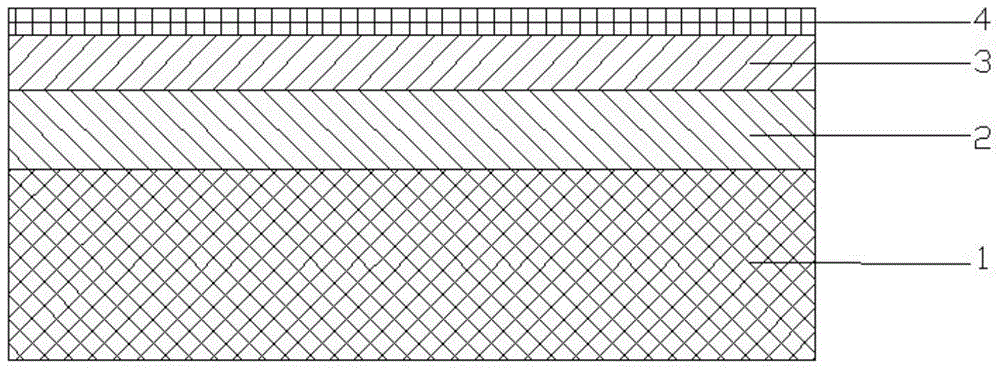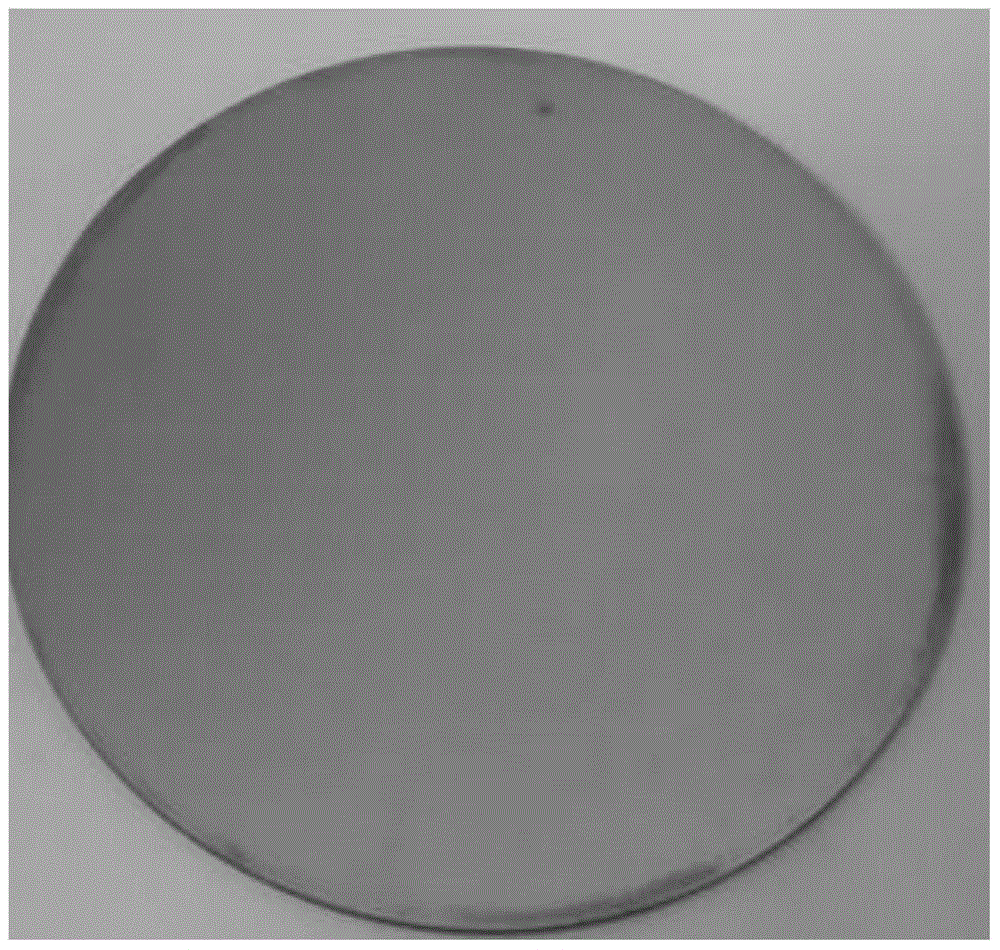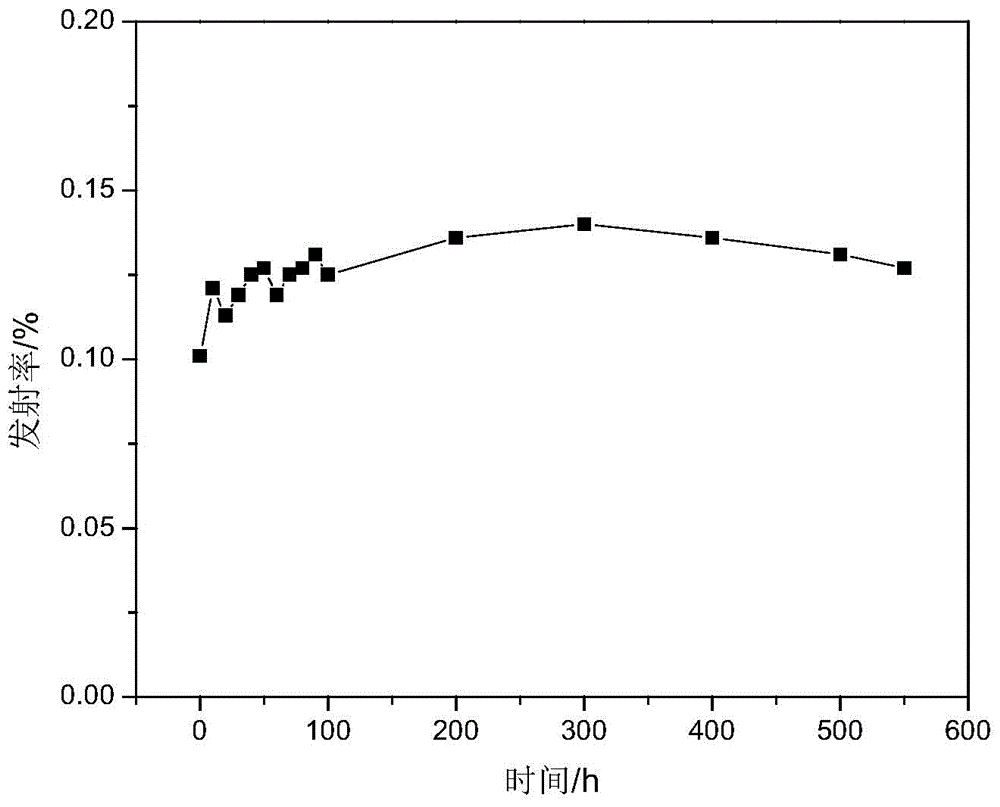Composite coating with high temperature resistance and oxidation resistance and low infrared emissivity and preparation method thereof
A low-infrared emission, composite coating technology, used in chemical instruments and methods, coatings, metal material coating processes, etc. Improved high temperature stability, prevention of residual carbon contamination, and low emissivity
- Summary
- Abstract
- Description
- Claims
- Application Information
AI Technical Summary
Problems solved by technology
Method used
Image
Examples
Embodiment 1
[0032] a kind of likefigure 1 , figure 2 The high-temperature-resistant and oxidation-resistant low-infrared-emissivity composite coating shown is a multi-functional layer superposition structure, which includes an oxidation barrier layer 2, a low-emissivity functional layer 3 and The protective film 4 is mainly bonded by mechanical bonding and solid phase diffusion connection between layers, wherein the oxidation barrier layer 2 is a NiCrAlY composite film, the low-emissivity functional layer 3 is a Pt film, and the protective film 4 is a MgO film.
[0033] The low infrared emissivity composite coating of this embodiment is deposited on the alloy substrate 1 of the GH3030 superalloy plate. In this embodiment, the thickness of the oxidation barrier layer 2 is 2.0 μm, the thickness of the low emissivity functional layer 3 is 2.0 μm, the thickness of the protective film 4 is 0.5 μm, and the oxidation barrier layer 2, the low emissivity functional layer 3 and the protection The...
Embodiment 2
[0041] a kind of like figure 1 The high-temperature-resistant and oxidation-resistant low-infrared-emissivity composite coating shown is a multi-functional layer superposition structure, which includes an oxidation barrier layer 2, a low-emissivity functional layer 3 and The protective film 4 is mainly bonded by mechanical bonding and solid phase diffusion connection between layers, wherein the oxidation barrier layer 2 is a NiCrAlY composite film, the low-emissivity functional layer 3 is a Pt film, and the protective film 4 is a MgO film.
[0042] The low infrared emissivity composite coating of this embodiment is deposited on the alloy substrate 1 of the Inconel 600 superalloy plate. In this embodiment, the thickness of the oxidation barrier layer 2 is 3.0 μm, the thickness of the low-emissivity functional layer 3 is 1.0 μm, the thickness of the protective film 4 is 1.0 μm, and the oxidation barrier layer 2, the low-emissivity functional layer 3 and the protection The films...
Embodiment 3
[0050] a kind of like figure 1 The high-temperature-resistant and oxidation-resistant low-infrared-emissivity composite coating shown is a multi-functional layer superposition structure, which includes an oxidation barrier layer 2, a low-emissivity functional layer 3 and The protective film 4 is mainly bonded by mechanical bonding and solid phase diffusion connection between layers, wherein the oxidation barrier layer 2 is a NiCrAlY composite film, the low-emissivity functional layer 3 is a Pt film, and the protective film 4 is a MgO film.
[0051] The low infrared emissivity composite coating of this embodiment is deposited on the alloy substrate 1 of the GH4169 superalloy plate. In this embodiment, the thickness of the oxidation barrier layer 2 is 4.0 μm, the thickness of the low-emissivity functional layer 3 is 1.5 μm, the thickness of the protective film 4 is 0.8 μm, and the oxidation barrier layer 2, the low-emissivity functional layer 3 and the protection The films 4 we...
PUM
| Property | Measurement | Unit |
|---|---|---|
| thickness | aaaaa | aaaaa |
| thickness | aaaaa | aaaaa |
| thickness | aaaaa | aaaaa |
Abstract
Description
Claims
Application Information
 Login to View More
Login to View More - R&D
- Intellectual Property
- Life Sciences
- Materials
- Tech Scout
- Unparalleled Data Quality
- Higher Quality Content
- 60% Fewer Hallucinations
Browse by: Latest US Patents, China's latest patents, Technical Efficacy Thesaurus, Application Domain, Technology Topic, Popular Technical Reports.
© 2025 PatSnap. All rights reserved.Legal|Privacy policy|Modern Slavery Act Transparency Statement|Sitemap|About US| Contact US: help@patsnap.com



